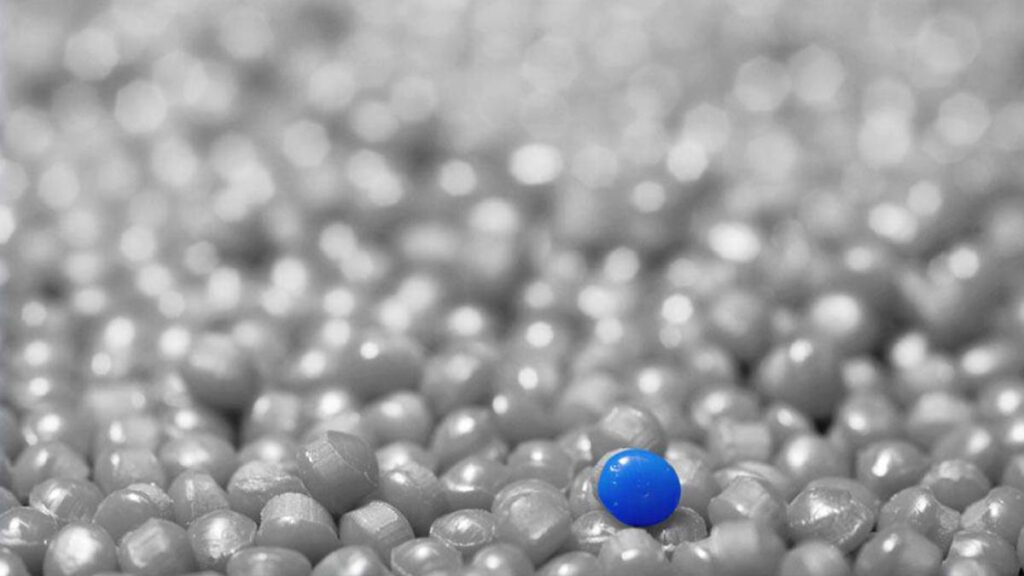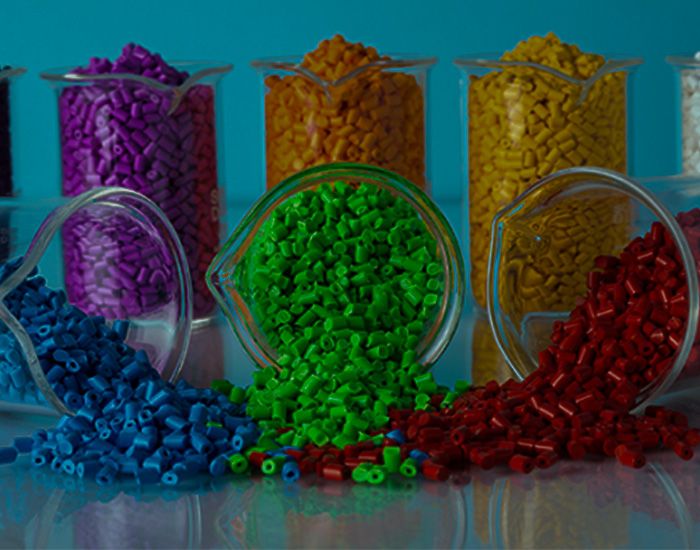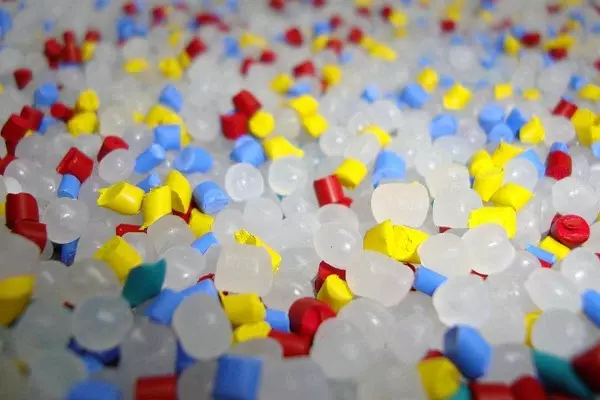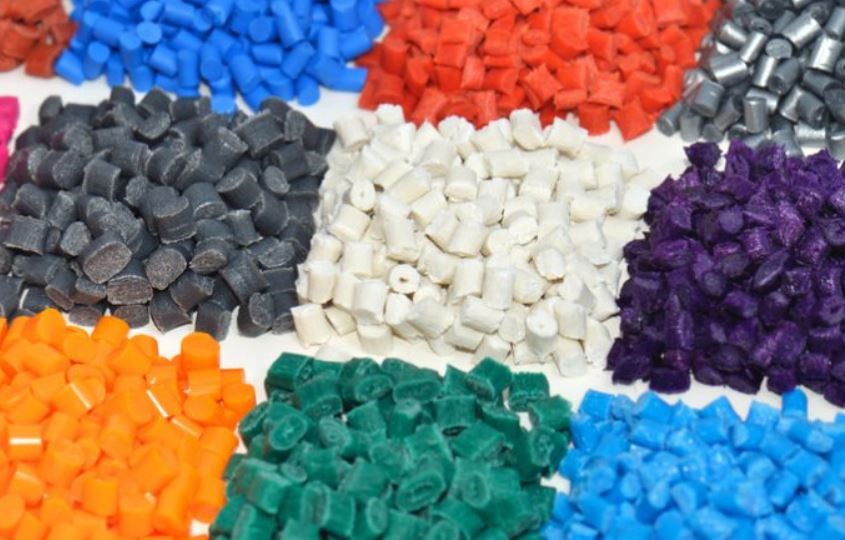The difference between compounds and additive masterbatches
In the polymer industry, compounds and additive masterbatches are two key concepts used to enhance the properties of plastic materials and improve their performance. In this article, we will explore the main differences between these two concepts.
A compound refers to a mixture of various materials prepared to improve the physical and chemical properties of polymers. These materials include the base polymer, additives, pigments, and other fillers that are combined to provide specific characteristics such as strength, flexibility, and resistance to heat and chemicals. The production process of compounds is typically carried out in equipment such as extruders and mixers.
On the other hand, additive masterbatches are specific compounds used to enhance particular properties of polymers. These additives may include UV stabilizers, flame retardants, stabilizers, and reinforcing materials. The primary purpose of using additive masterbatches is to improve the performance and longevity of the final product. These additives are typically added in small quantities to polymers and have specific effects on the final properties of the product.
In general, the main difference between a compound and an additive masterbatch lies in the fact that a compound consists of a combination of multiple materials to achieve desired properties, whereas additive masterbatches focus on improving only a specific component of a material. Understanding these differences can facilitate more effective selection and use of various materials in the plastics and polymer industries.

Introduction to Compounds and Reasons for Their Use
A compound is a key term in the polymer industry, referring to a mixture of two or more raw materials in specific proportions. These raw materials include base polymers and various additives used in the production of plastic products. Compounds play a significant role in the manufacturing process, contributing to improved product quality and facilitating production through the precise combination of raw materials.
Reasons for Using Compounds
1. Improved Product Quality
Compounds, due to their precise and balanced combination of raw materials, impart desirable properties such as strength, flexibility, and resistance to heat to the final products. These properties can significantly enhance the quality and performance of the product, ensuring compliance with health and industrial standards.
2. Reduced Production Costs
Using compounds reduces production costs by minimizing the need for mixing and combining raw materials at each stage of the production process. By utilizing ready-made compounds, the time and costs associated with material preparation and mixing are reduced, leading to increased efficiency.
3. Reduced Production Issues
One common issue in plastic production is the improper mixing of raw materials and delays in the manufacturing process. Compounds provide a uniform and ready-to-use mixture, minimizing these issues and streamlining the production process.
4. Cost Savings in Cleaning
Using compounds reduces the need for cleaning machinery and production equipment each time the formulation changes. This cost-saving in cleaning is due to the reduced need for constant adjustments and changes in production equipment.
5. Optimized Use of Additives
Compounds allow for the precise and efficient addition of various additives to polymers. These additives may include UV stabilizers, stabilizers, and reinforcing materials, ensuring improved specific properties in the final products.
Ultimately, compounds serve as the foundation for producing plastic products and play a critical role in the polymer industry by providing enhanced properties and reducing production costs.
Types of Compounds
Compounds are combinations of polymers and additives produced to enhance the physical, chemical, or mechanical properties of polymeric products. Each type of compound has specific characteristics and applications, enabling their use in various industries. Below, we introduce different types of compounds and their applications:
1. Polyethylene Compound
Polyethylene is a base polymer produced in various types with differing densities levels. Pigments and other additives are used to improve its physical properties.
– Polyethylene Compound with Pigments: This type of compound is used in the production of blown films, pressure pipes, and irrigation pipes. Adding pigments and carbon black to polyethylene improves resistance to sunlight and sealing performance. This combination not only enhances physical properties but is also cost-effective and increases the lifespan of the final product.
-Features and Applications: High resistance to environmental conditions, good formability, and cost-effectiveness are among the advantages of this compound. It is used in the production of water supply pipes and plastic films.
2. Polypropylene Compound**
Polypropylene is a hard, crystalline thermoplastic widely used in various industries due to its unique properties.
– Features and Applications: This compound has low density, high elastic modulus, and good corrosion resistance. It is used in the production of household products, medical devices, and automotive parts. Polypropylene compounds are easily formable and available in various colors.
– Production Method: These compounds are typically produced using extrusion methods, aimed at enhancing the efficiency and physical and mechanical properties of polypropylene.
3. Polyvinyl Chloride (PVC) Compound
Polyvinyl chloride (PVC) is another base polymer used in various types of compounds due to its unique properties.
– Features and Applications: PVC compounds, due to their good resistance to water, chemicals, and environmental conditions, are used in the production of sewage pipes, floor coverings, and electrical insulation. These compounds can be easily colored and produced in various shapes and applications.
4. Polyurethane Compound
Polyurethane, due to its elastic properties and good abrasion resistance, is used in many applications.
– Features and Applications: Polyurethane compounds are used in the production of tires, elastic components, and protective coatings. This compound provides specific properties such as abrasion resistance, high toughness, and flexibility.

Buying Different Types of Compounds
To buy various types of compounds, you can visit reputable suppliers such as Aria Amizeh Pars, which offers a wide range of compounds with different qualities and features. Choosing the right compound depends on your specific needs and the desired properties of the final product.
What is a Masterbatch?
A masterbatch is a type of polymer blend that is added to base polymers to impart specific properties to the final product. These properties include coloration, UV resistance, and other enhanced features. Masterbatches are essential in the plastics and polymer industries because of their ability to improve polymer properties and enhance production efficiency.
Masterbatch Production Process
The production process of masterbatch and compound involves three main components:
-
Polymer Base: This material is the primary foundation of the masterbatch and compound, and it must have a suitable structure compatible with the chemical additives. The chosen polymer base should be able to withstand and support the additives during the production process.
-
Compatibilizer: This agent ensures compatibility between the chemical additives and the polymer base. The purpose of using a compatibilizer is to ensure the uniform dispersion of the additives within the polymer and to maintain the quality of the final product.
-
Chemical Additives: These materials include pigments, stabilizers, and other chemicals that, when added to the polymer base, impart specific properties to the final product. These additives can provide coloration, UV resistance, and improved mechanical and chemical characteristics.
Problems with Direct Use of Masterbatch
Direct use of masterbatch for final product production can be associated with several problems:
-
Inadequate Dispersion of Additives: If the additives are not properly dispersed within the polymer, the quality of the final product may be compromised. Poor uniformity in additive dispersion can lead to undesirable and inconsistent product characteristics.
-
Chemical Reactions: Interaction and reaction of chemical additives with each other, if not properly dispersed, can create problems that negatively affect the quality of the final product.
-
Environmental Pollution: Direct use of masterbatch can lead to increased environmental pollution, as powders present in the masterbatch can disperse in the workshop environment and act as a source of contamination.
Advantages of Using Compound
Compared to masterbatch, using compounds—which are fully prepared and require no additional mixing with the polymer base—can minimize these problems. Compounds offer the following advantages:
-
Improved Product Quality: Compounds, due to the proper and uniform mixture of materials, provide higher quality to the final products.
-
Reduced Production Problems: Compounds help minimize issues related to inadequate dispersion and unwanted chemical reactions.
-
Reduced Environmental Pollution: Using compounds reduces the need for powders and additional mixtures, leading to lower environmental contamination.
In conclusion, using compounds can ensure improved quality and performance of products while minimizing the problems associated with the direct use of masterbatch.
Differences Between Compound and Masterbatch
Compound and masterbatch are both used as additive mixtures in the plastics and polymer industry, but they have different characteristics and applications that set them apart. Here, we examine the main differences and the reasons behind them:
Process of Adding to the Polymer Base
-
Masterbatch: Masterbatches are added as additives to the polymer base. These additives usually include pigments, stabilizers, and other chemicals whose purpose is to improve the properties of the polymer base. Because masterbatches alone do not contain enough additives, they cannot be directly added to the polymer base and must be used as an additive.
-
Compound: Compounds are directly fed into the production equipment and used as the base for the final product. Compounds typically include the polymer base and various additives that have been uniformly combined. Therefore, a compound usually does not require the addition of masterbatch, as the desired properties have already been incorporated.
Distribution and Dispersion of Additives
-
Masterbatch: One of the challenges of using masterbatch directly is the inadequate dispersion of additives in the polymer base. If the masterbatch is not uniformly distributed in the polymer base, the quality of the final product is affected. Masterbatches, since they do not contain enough additives, may not completely and uniformly blend with the polymer base.
-
Compound: Compounds, due to the precise and uniform blending of the polymer base and additives, provide good dispersion and distribution in the final product. This leads to better and more stable quality and performance of the final product.
Environmental Pollution
-
Masterbatch: Direct use of masterbatch can lead to increased environmental pollution because these materials are usually in powder form and may disperse into the workshop environment, acting as a source of contamination.
-
Compound: Using compounds, due to the reduced need for powder materials and additional mixtures, can significantly reduce environmental pollution issues. Compounds are typically prepared as uniform mixtures that can be easily used in the production process and pose fewer environmental hazards.
In conclusion, choosing between compound and masterbatch depends on the specific production needs and the desired properties of the final product. While masterbatches are useful additives for improving the properties of polymers, compounds—due to their uniform mixture and reduced issues related to the dispersion of additives—can be a suitable option for producing high-quality final products.



